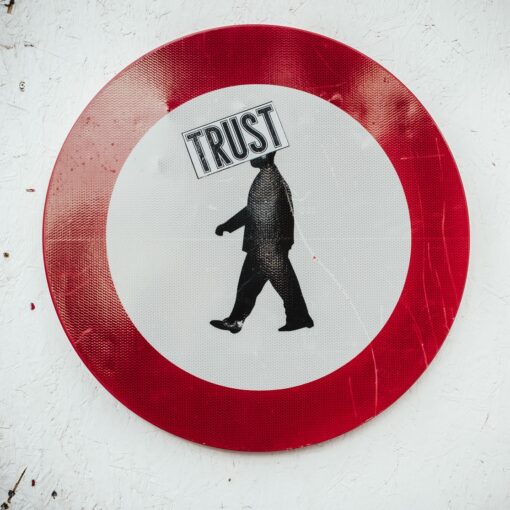
Ah, collection letters—the polite yet firm reminders that money doesn’t grow on trees, but rather hides behind couches and in the depths of your wallet. Crafting a collection letter is akin to inviting someone to a party while simultaneously reminding them they owe you for last week’s pizza. It requires just the right balance of charm and urgency, like trying to convince a cat to take a bath—good luck with that!
But fear not! With the right strategies, your collection letters can transform from dreaded tasks into effective tools for reclaiming what’s yours. Imagine wielding your pen like a superhero's sword, cutting through confusion and ensuring your business remains financially fit while maintaining those all-important relationships.
Many small business owners suffer from the same issue. Late payments and late response to collections letters, which in turn causes more unpaid invoices to pile up. It becomes an endless cycle that is hard to break.
Collection letters are used as a final attempt to collect what is owed to your company. Effective letter writing and effective collection letter management and processing can help you minimize the number of unpaid invoices, as well as streamline the process.
One of the most important factors in collecting on accounts is the business– consumer relationship. A good relationship with your customers translates into a more effective and efficient collection process. Collection letters can be an effective way to reach out to those who owe your business money; however, it’s important not to scare away loyal customers and business partners by overusing them.
Whether you are in the service industry or selling a product to consumers or clients on credit, there is always the possibility that those customers would utilize your product or service and then fail to pay you for it in a timely manner.
Individuals may fail to pay their bills due to a simple error (they forget) or because they are experiencing financial difficulties. It is also possible that individuals are capable of making a payment but choose not to do so for a variety of reasons. Any situation in which you have offered a service or product to another person warrants payment for that service or product on your part. Otherwise, it may be required to create, print, and send a collection letter to get payment on your debt.
Of course, no one enjoys receiving collection letters, particularly when they are sent to individuals who are current customers or clients of your company and with whom you may wish to do business in the near future. The reality of the matter is that you must be able to collect money from customers in exchange for the goods and services that you supply. If you are unable to do so, your firm will be unable to make a profit, and you may find yourself in financial difficulty as a consequence of your failure to collect on bills outstanding.
Collection letters are an effective tool for enforcing payment obligations. When consumers get a collection letter, it may serve to remind them of their duty to pay, in case they had forgotten about it before. It is also possible that recipients of a collection letter may be prompted to pay if they had previously decided not to or had previously been unable to do so, since the collection letter might remind them of the implications of nonpayment, which may include harm to their credit ratings.
Of course, although your collection letter should be written in such a way that it encourages payment, it must not violate any of your customer's rights as stated by the Fair Debt Collection Practices Act (FDCPA) or other consumer protection statutes and regulations. This implies that your letter must be carefully prepared in such a way that the recipient is encouraged to react by making a payment, but it must not be structured in such a way that anyone's legal rights are violated.
Correctly drafting your letter may be difficult; much more difficult is efficiently processing, printing, and mailing the collection letters to ensure that they are received in a timely way. Fortunately, there are specialists that can assist you with the processing, printing, and sending of collection letters, allowing you to focus on other important aspects of your company.
You should always make sure that customers are aware of your collection procedure, as well as the due date for fees and payments, when you are operating a company. Make sure you interact with customers on a regular basis to find out if their mailing address has changed, which might result in them not getting a bill.
When people are aware of their responsibilities to pay and receive a bill from you, there is no reason for them to fail to do so. You are well within your rights to hire a professional who handles collection letter processing, printing, and mailing in order to enforce your fees and force non-payers to pay what is owed.
As we conclude our journey through the world of collection letter management, remember this: it’s not just about getting paid; it’s about fostering communication and understanding. A well-crafted collection letter can be the difference between an amicable reminder and an awkward silence—like sending a thank-you note after receiving socks for your birthday.
So go forth with confidence! With these techniques in hand, you’ll navigate the delicate art of collections like a seasoned diplomat at a peace summit—minus the fancy suits and endless negotiations, of course.
Suggested External Resources:
How to Write Effective Collection Letters
https://www.thebalancesmb.com/how-to-write-collection-letters-4161160
Best Practices for Collection Letter Management
https://www.creditcards.com/credit-card-news/collection-letter-best-practices/
The Art of Debt Collection Communication
https://www.forbes.com/advisor/business/debt-collection-tips/





